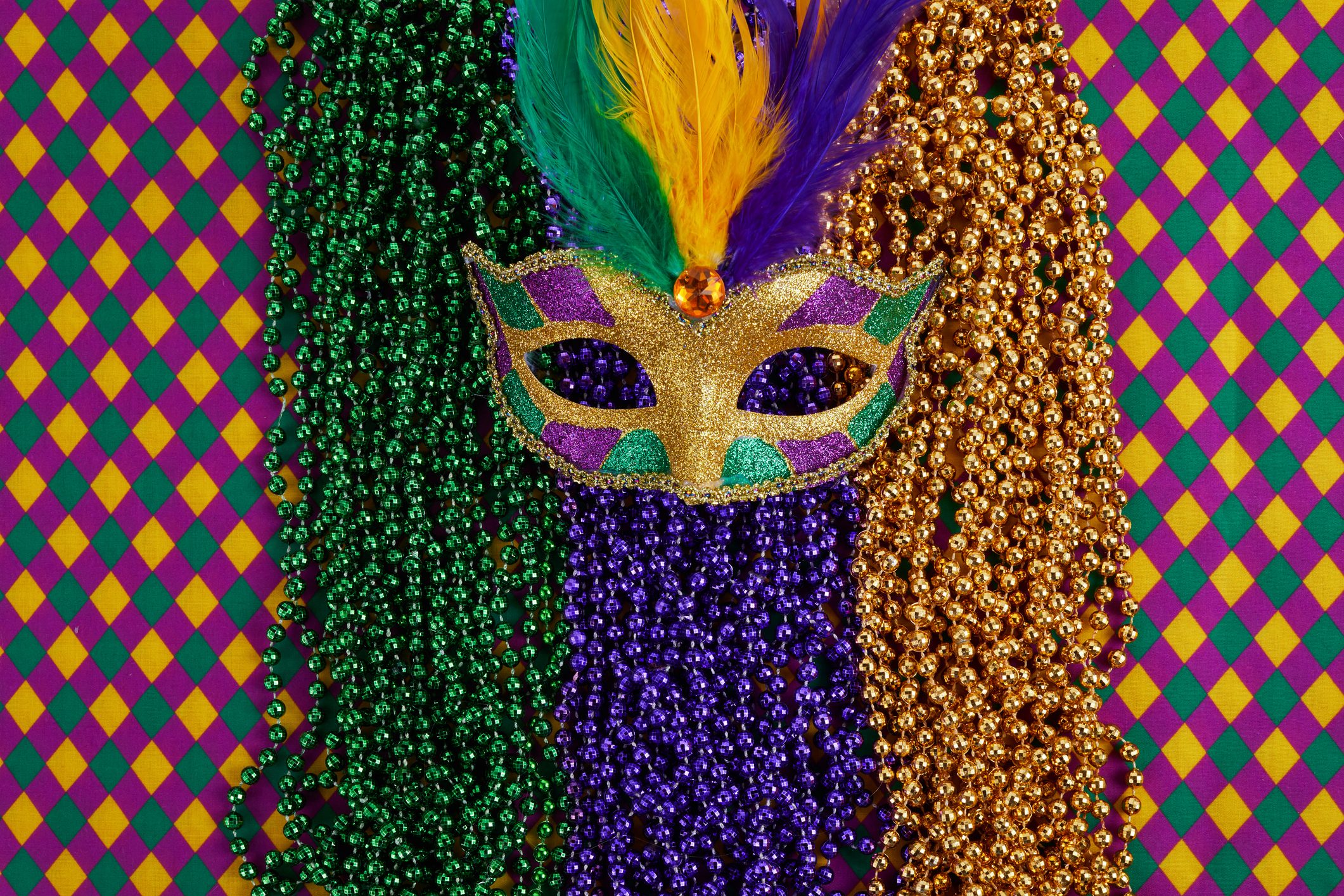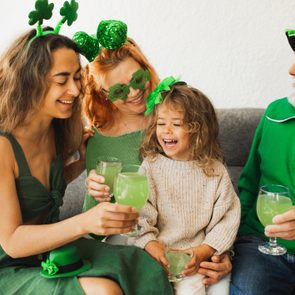If you want to unearth the history and origins of Mardi Gras, the iconic Mardi Gras colors are a good place to start

Why Are the Mardi Gras Colors Purple, Gold and Green?

For party animals, few holidays match the joy (and mayhem) of Mardi Gras. If you count yourself among them, you know that the vibrant New Orleans tradition takes place on Fat Tuesday—that’s March 4 this year. But chances are, you’re less informed about the iconic Mardi Gras colors.
Is the celebration really all about green, purple and gold? Why were these three colors chosen to represent Mardi Gras, and what do they mean? There’s so much to discover about their history, symbolism and contribution to Mardi Gras traditions. So read on for a colorful journey into the origins of Mardi Gras colors, then get ready to celebrate in style.
Get Reader’s Digest’s Read Up newsletter for more holiday tips, fun facts, humor, cleaning, travel and tech all week long.
What are all of the traditional Mardi Gras colors?
The traditional Mardi Gras colors are purple, gold and green. When celebrating Mardi Gras, you can use any shade of the three hues.
You’ll spot these iconic colors everywhere: on masks, dazzling Mardi Gras floats and countless other decorations throughout the celebration.
Why are there three Mardi Gras colors?

There are three Mardi Gras colors to represent a flag with three colors. According to the site Mardi Gras New Orleans, when local historian Errol Flynn Laborde researched the 125th anniversary of the Rex krewe (the organization that produces the parade), he came to the conclusion that the Rex founders believed “a king must have a kingdom, and a kingdom must have a flag.” A tricolor flag was the obvious choice, as the United States, Great Britain and France each have one.
Why were these specific Mardi Gras colors chosen?
While it was long thought that the colors were selected to honor Russian Grand Duke Alexei Alexandrovich Romanoff’s 1872 visit, Laborde has a different theory. According to traditional heraldry rules, a coat of arms needs both colors and metals; there are five choices of color: purple, green, red, blue and black, and the metal choices are limited to silver and gold.
Purple has long been associated with royalty, making it an easy pick. Gold, likewise, was obvious, as it was more fitting for a king than silver. From there, Laborde found that the field was narrowed down to purple, gold and green or purple, gold and black. We may never know why green won out as the third color.
What do the Mardi Gras colors mean?

The Mardi Gras colors weren’t given an official meaning until 1892, when the Rex parade had the theme “Symbolism of Colors.” That’s the year it was decided that purple stood for justice, green for faith and gold for power—making a powerful and vibrant color combination for king cake!
Do the Mardi Gras colors represent school colors?
It’s a mystery! There is an urban legend that the Mardi Gras colors are responsible for the choice of school colors for archrivals Louisiana State University and Tulane University. Allegedly, when LSU was deciding on its colors, the stores in New Orleans were stocked up with purple, green and gold items for the Mardi Gras season. The school bought all the purple and gold items, leaving Tulane, home of the Green Wave, with only green options.
Given that LSU was founded in 1860 and Tulane dates back to 1834, we’re not sure how much water this story holds. What we do know is that if you’re headed to NOLA for Mardi Gras, you’ll want to wear your best purple, green and gold—it’s a surefire way to get more beads and trinkets tossed your way.
Why trust us
At Reader’s Digest, we’re committed to producing high-quality content by writers with expertise and experience in their field in consultation with relevant, qualified experts. We rely on reputable primary sources, including government and professional organizations and academic institutions as well as our writers’ personal experiences where appropriate. We verify all facts and data, back them with credible sourcing and revisit them over time to ensure they remain accurate and up to date. Read more about our team, our contributors and our editorial policies.
Sources:
- Mardi Gras New Orleans: “The Truth About the Purple, Green, and Gold of Mardi Gras”
- International Heraldry and Heralds




















